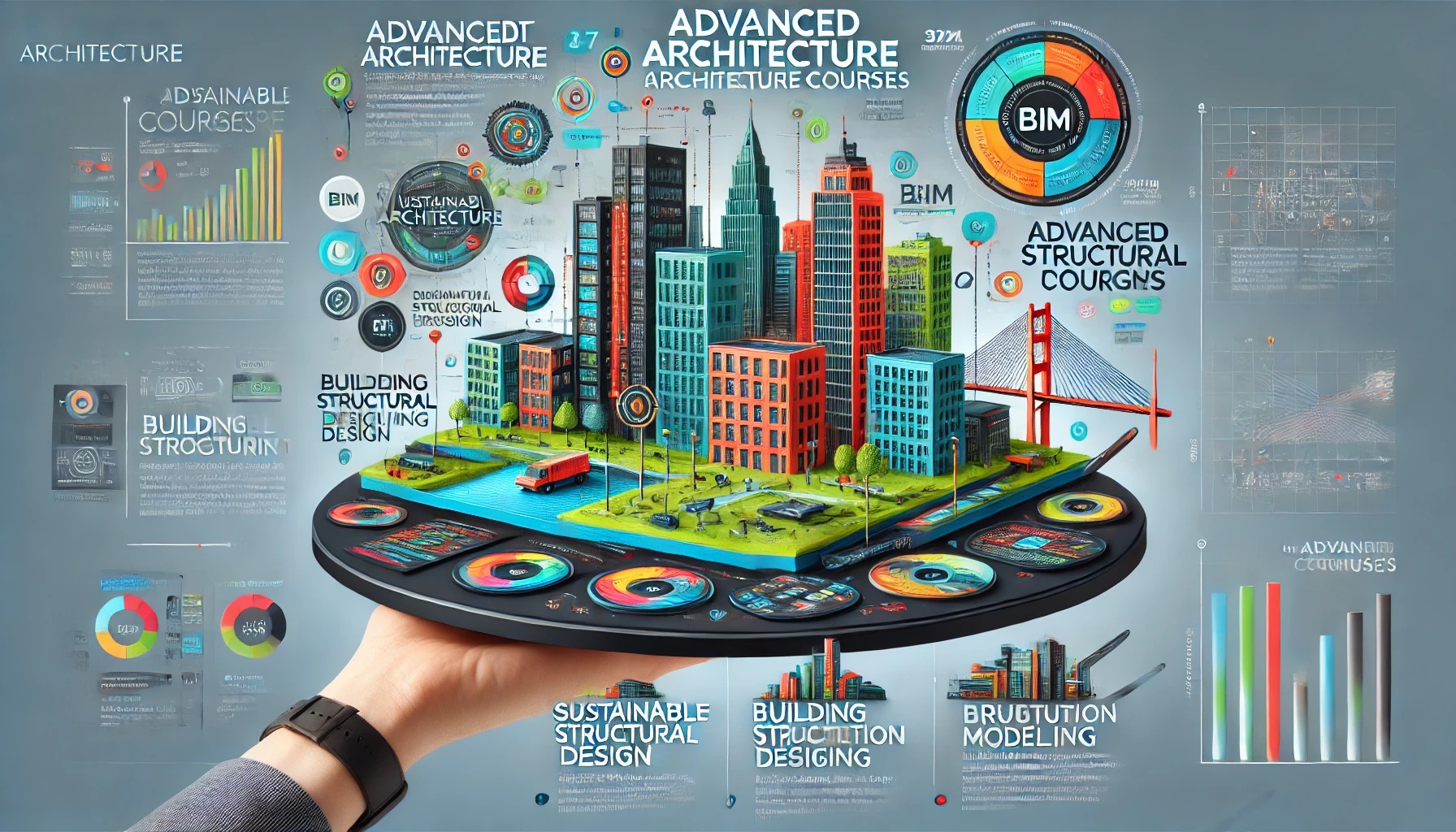
About Course
🏛️ Advanced Architecture Program
Course 3021-ARC
Course Title: Sustainable Architecture – Designing Environmentally Friendly Buildings
🏛️ Introduction to Sustainable Architecture
In an era where climate change and environmental degradation pose serious global challenges, sustainable architecture has emerged as a vital solution to reduce the ecological footprint of the built environment. This course introduces participants to the principles and practices of environmentally responsible architectural design. By merging aesthetics with function, technology with nature, and tradition with innovation, sustainable architecture aims to create buildings that are energy-efficient, resource-conscious, and comfortable for occupants.
Participants will explore key topics such as energy-efficient design, green building materials, water conservation strategies, and international sustainability standards like LEED and BREEAM. Through hands-on projects and case studies, this course empowers architects and designers to lead the transformation toward a more sustainable future in construction and urban development.
✅ 📘 Course Description:
This course offers an in-depth exploration of sustainable architecture and how it can be practically applied in real-world building design. Participants will learn about eco-friendly construction strategies, energy efficiency techniques, water conservation systems, and sustainable material selection. The program is rooted in environmental consciousness, aiming to empower architects and designers to minimize ecological impact while enhancing user comfort and building performance.
🎯 Learning Objectives (Outcomes):
By the end of the course, participants will be able to:
-
Understand key principles of sustainability in architectural contexts.
-
Design buildings that minimize environmental footprint through passive and active strategies.
-
Select and evaluate eco-friendly building materials and systems.
-
Integrate renewable energy and water-saving technologies into architectural designs.
-
Critically analyze case studies of green buildings.
-
Complete a full architectural proposal for a sustainable building including energy and materials analysis.
🧑🎓 Target Audience:
-
Architecture students and graduates
-
Professional architects seeking to specialize in green design
-
Urban designers and environmental engineers
-
Municipal planners and sustainability officers
📂 Course Content (Detailed Outline):
Module 1: Introduction to Sustainable Architecture
-
Definitions and global importance
-
LEED, BREEAM, and other sustainability standards
-
Role of architects in climate change mitigation
Module 2: Energy Efficiency in Building Design
-
Passive design principles (orientation, ventilation, insulation)
-
Renewable energy integration (solar panels, geothermal systems)
-
HVAC systems and energy modeling basics
Module 3: Sustainable Materials and Construction Techniques
-
Lifecycle analysis of materials
-
Natural and recycled materials
-
Low-carbon construction methods
Module 4: Water Systems and Waste Management
-
Rainwater harvesting and greywater systems
-
Composting and low-flush systems
-
Sustainable landscaping integration
Module 5: Case Studies in Green Architecture
-
Local and international examples
-
Performance analysis
-
Lessons learned and best practices
Module 6: Capstone Project
-
Design of a sustainable residential, educational, or commercial facility
-
Inclusion of site analysis, materials strategy, energy modeling
-
Final project presentation
📝 Course Format:
-
Mode: Blended (Live + Recorded Sessions + Studio Workshops)
-
Languages: Arabic / English
-
Assessment: Weekly assignments, quizzes, final design project
-
Software Used: AutoCAD, Revit (BIM), EnergyPlus, SketchUp, Lumion
⏰ Time Frame:
-
Duration: 6 to 8 weeks
-
Sessions: 2 sessions per week × 2 hours
-
Capstone Week: Final presentation and critique
📦 Materials Included:
-
Digital course handbook and lecture slides
-
Library of sustainable design resources
-
Sample templates and materials databases
-
Access to simulation tools for energy and water use
-
Case study archive with analysis breakdown
📌 Course Instructions:
-
Before the course begins:
-
Ensure you have access to the required software and a computer that meets the specifications.
-
Familiarize yourself with global sustainability frameworks (LEED, EDGE, BREEAM).
-
-
During the course:
-
Attend all lectures and actively participate in group discussions.
-
Complete all practical assignments on time.
-
Engage in peer-review and feedback sessions.
-
-
Capstone project guidelines:
-
Apply all theoretical knowledge into a single design project.
-
Include technical drawings, sustainability analysis, and energy simulations.
-
Prepare a professional presentation to deliver your design.
-
Course Content
🏛️ Advanced Architecture Program
Student Ratings & Reviews



